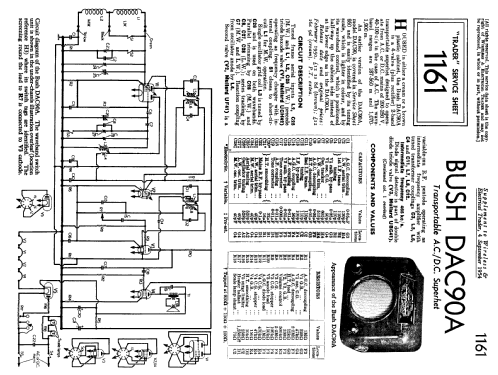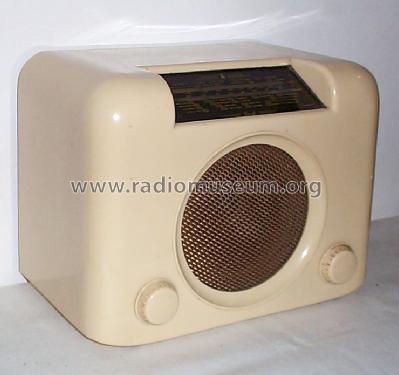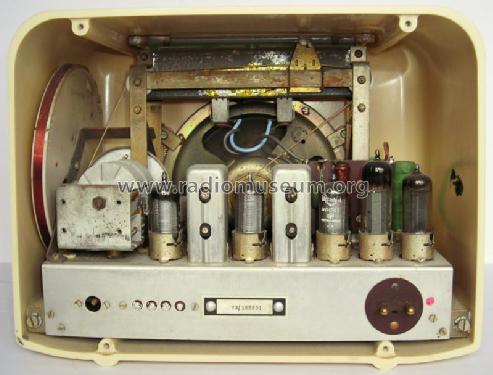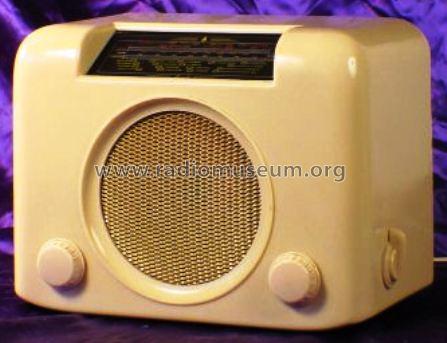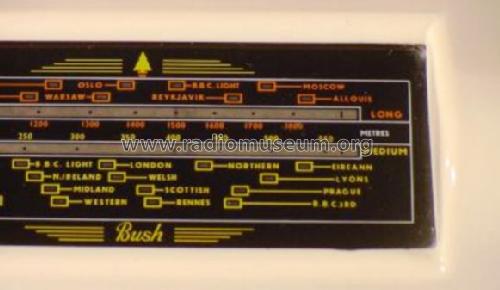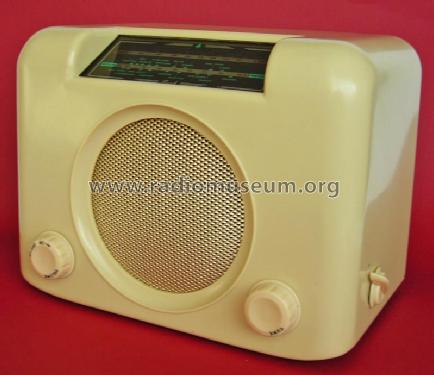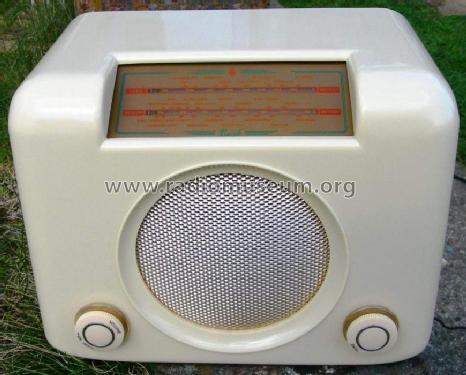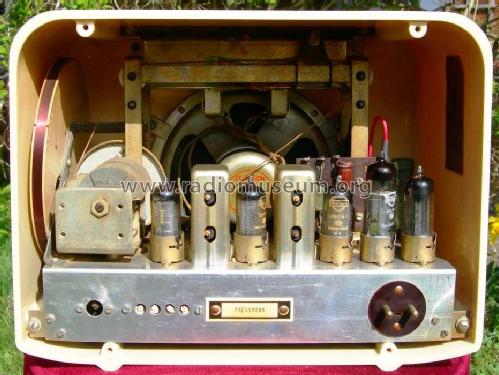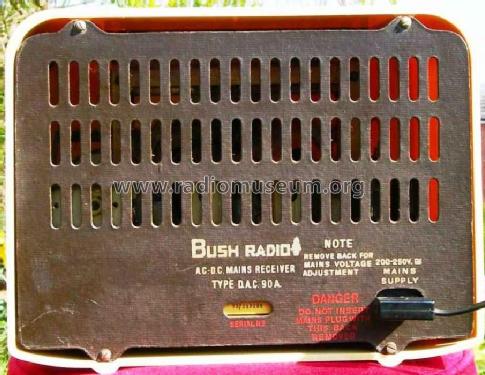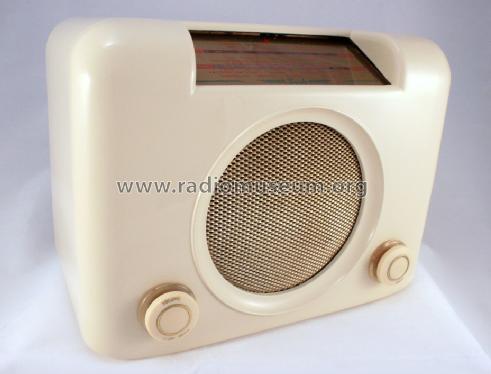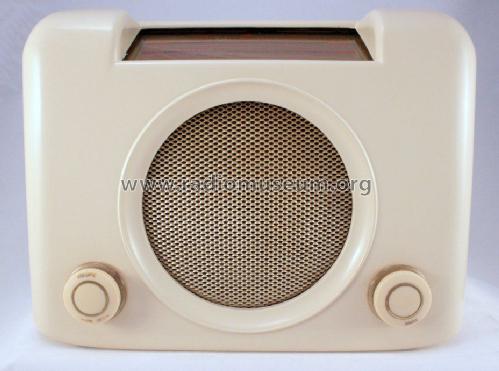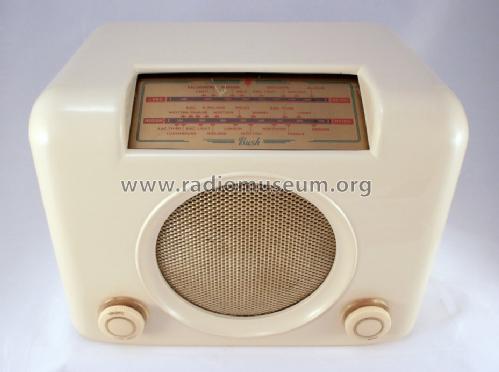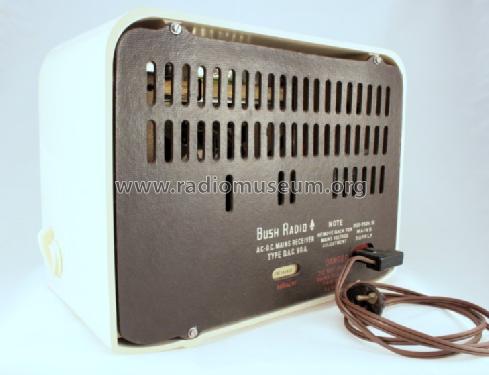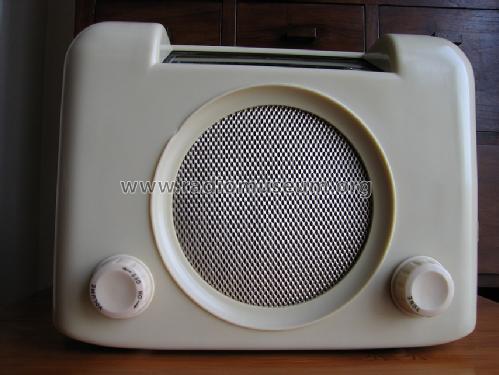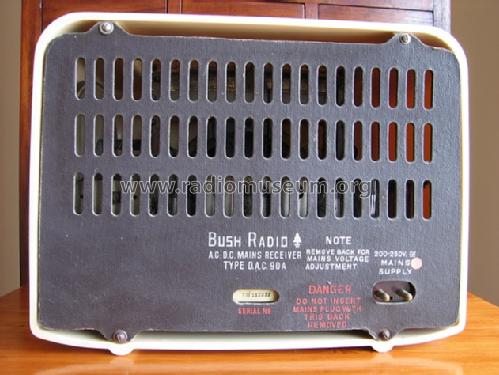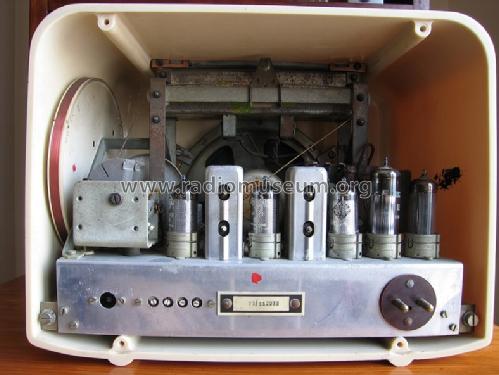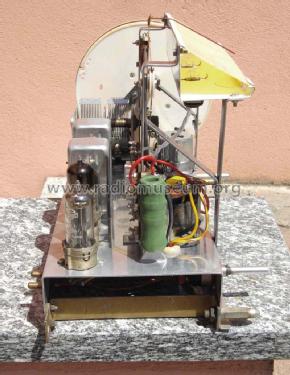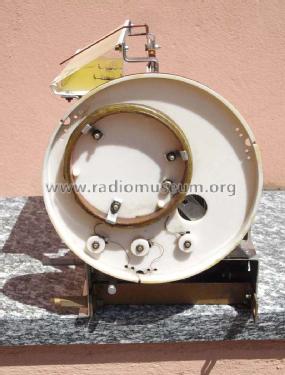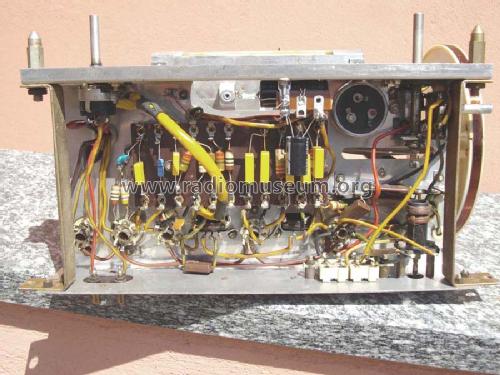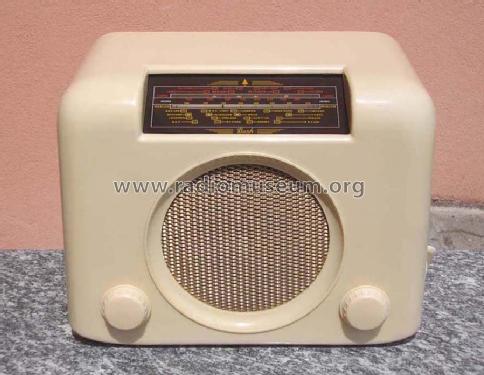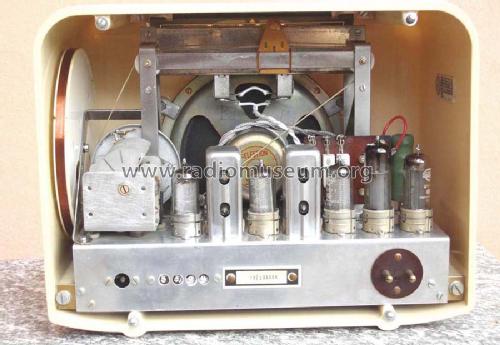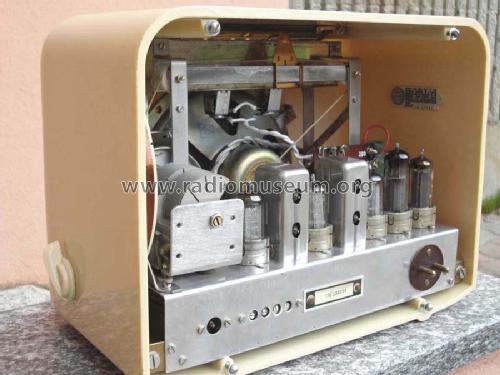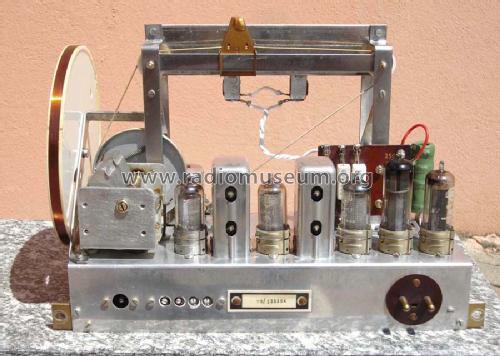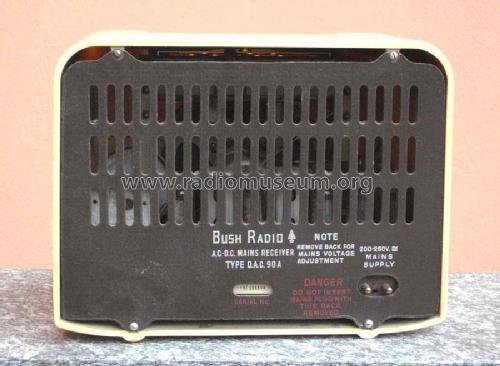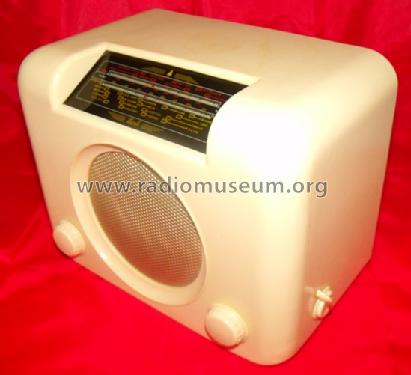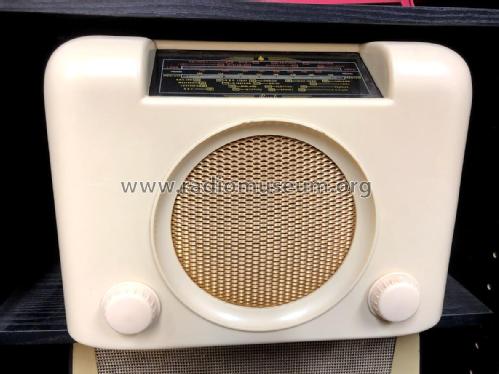DAC90A cream
Bush Radio Ltd.; london
- Land
- Grossbritannien (UK)
- Hersteller / Marke
- Bush Radio Ltd.; london
- Jahr
- 1950–1959
- Kategorie
- Rundfunkempfänger (Radio - oder Tuner nach WW2)
- Radiomuseum.org ID
- 82157
Klicken Sie auf den Schaltplanausschnitt, um diesen kostenlos als Dokument anzufordern.
- Anzahl Röhren
- 5
- Hauptprinzip
- Superhet allgemein; ZF/IF 465 kHz; 2 NF-Stufe(n)
- Anzahl Kreise
- 6 Kreis(e) AM
- Wellenbereiche
- Langwelle, Mittelwelle (LW+MW).
- Betriebsart / Volt
- Allstromgerät / 210, 230, 250 Volt
- Lautsprecher
- Dynamischer LS, keine Erregerspule (permanentdynamisch) / Ø 6 inch = 15.2 cm
- Belastbarkeit / Leistung
- 2 W (Qualität unbekannt)
- Material
- Plastik oder Bakelit
- von Radiomuseum.org
- Modell: DAC90A [cream] - Bush Radio Ltd.; london
- Form
- Tischgerät ohne Drucktasten, bis 35 cm Breite (Kleingerät, meist dekorativ. Nur für Netzbetrieb, doch Transportgriff möglich).
- Abmessungen (BHT)
- 12.75 x 9.25 x 7.6 inch / 324 x 235 x 193 mm
- Bemerkung
- The best selling valve radio in Great Britain. The radio was also available in a walnut coloured Bakelite cabinet at les cost; later models had an IF/ZF of 470 kHz. The three voltages have to be changed by opening a screw and to put the wire to the other screw. At the back is given 200-250 Volts.
A commonProblemis: Volume doensn´t go to zero on a strong signal if Potentiometer is at the CCW stop. Remedy: a 330 picofarad capacitor between Grid and Kathode of the UBC41. Short leads are important, and perhaps replacement of the big 100k resistor to the grid by a smaller sized one of the same value. See also info below.
- Nettogewicht
- 4.5 kg / 9 lb 14.6 oz (9.912 lb)
- Datenherkunft
- Radio! Radio!
- Autor
- Modellseite von Ernst Erb angelegt. Siehe bei "Änderungsvorschlag" für weitere Mitarbeit.
- Weitere Modelle
-
Hier finden Sie 402 Modelle, davon 336 mit Bildern und 239 mit Schaltbildern.
Alle gelisteten Radios usw. von Bush Radio Ltd.; london
Sammlungen
Das Modell befindet sich in den Sammlungen folgender Mitglieder.
